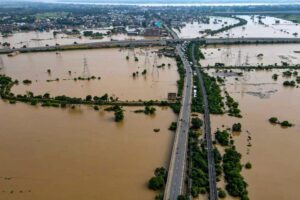President Gabriel Boric of Chile has confirmed that more than a hundred people have lost their lives in the fires that have ravaged Valparaiso over the past two days. In response, the president has declared two days of official mourning and a national emergency.
President Gabriel issued a warning that the death toll from the fierce wildfires in central Chile would likely rise “significantly” as rescue teams searched through destroyed neighbourhoods, and on Sunday, that number rose to at least 112 people.
El Nino weather phenomena are causing a summer heatwave and drought in southern South America, fueling the fires. Scientists warn that extreme heat and fires are becoming more common as the planet warms. During a severe summer heat wave that saw temperatures reach 40 degrees Celsius (104 degrees Fahrenheit) over the weekend, firefighters continued to battle fires in the coastal tourist area of Valparaiso.
As firefighters in Argentina battle a fire that has burned over 3,000 hectares in Los Alerces National Park—known for its splendour and biodiversity—since January 25, the rising temperatures threaten to engulf more of the continent.
Interim Budget 2024: FM Nirmala Sitharamana Presents 6th Budget
What is El Nino & La Nina & its relation with the Chile Forest Fire?
El Nino is a natural phenomenon that causes the ocean’s temperature to rise, particularly in some regions of the Pacific Ocean. The term “nomenclature” refers to a recurring development along Peru’s coast. This development temporarily substitutes the chilly current along Peru’s coast. The word “El Nino” is Spanish. “The child” is the literal meaning of the term El Nino. This is because the name alludes to the birth of Christ. After all, the current begins to flow around Christmas.
La Nina, another natural occurrence currently making headlines, is comparable to El Nino. “Little girl” is what the term La Nina means. Since it causes the ocean water in some regions of the Pacific Ocean to “cool,” it is referred to as the opposite of the El Nino phenomenon. Together with oceanic changes, both of them also cause changes in atmospheric conditions.
Advertisement




